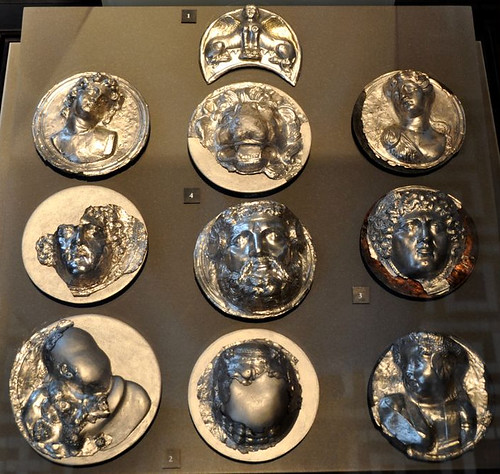
PREV ARTICLE
NEXT ARTICLE
FULL ISSUE
PREV FULL ISSUE
ROMAN MILITARY MEDUSA MEDAL FOUNDEd Hohertz passed along this article about the find of an interesting silver Roman military medal picturing Medusa. Thanks. -Editor A nearly 1,800-year-old silver military medal featuring the snake-covered head of Medusa has been unearthed in what was once the northern edge of the Roman Empire. Excavators discovered the winged gorgon on June 6 at the English archaeological site of Vindolanda, a Roman auxiliary fort that was built in the late first century, a few decades before Hadrian's Wall was constructed in A.D. 122 to defend the empire against the Picts and the Scots. The "special find" is a "silver phalera (military decoration) depicting the head of Medusa," according to a Facebook post from The Vindolanda Trust, the organization leading the excavations. "The phalera was uncovered from a barrack floor, dating to the Hadrianic period of occupation." Medusa — who is known for having snakes for hair and the ability to turn people into stone with a mere glance — is mentioned in multiple Greek myths. In the most famous story, the Greek hero Perseus beheads Medusa as she sleeps, pulling off the feat by using Athena's polished shield to indirectly look at the mortal gorgon so that he wouldn't be petrified, according to the Metropolitan Museum of Art in New York City. "From Greek times on, this is a potent apotropaic to ward off bad things, to keep bad things from happening to you," Pollini said. Medusa's serpent-surrounded head is also seen on Roman-era tombs, mosaics in posh villas and battle armor. For instance, in the famous first-century mosaic of Alexander the Great from Pompeii, Alexander is depicted with the face of Medusa on his breastplate, Pollini noted. Medusa is also featured on other Roman-era phalerae, but the details vary. For instance, the Vindolanda Medusa has wings on her head. "Sometimes you see her with wings, sometimes without," Pollini said. "It probably indicates she has the ability to fly, sort of like [the Roman god] Mercury has little wings on his helmet." Silver phalerae of the Roman soldier Titus Flavius Festus in the Neues Museum (of the Staatliche Museen) in Berlin. Two Medusa heads are represented in the second row of the display on each side of a horned head of Ammon Zeus.
To read the complete article, see:
THE BOOK BAZARREWayne Homren, Editor The Numismatic Bibliomania Society is a non-profit organization promoting numismatic literature. See our web site at coinbooks.org. To submit items for publication in The E-Sylum, write to the Editor at this address: whomren@gmail.com To subscribe go to: https://my.binhost.com/lists/listinfo/esylum All Rights Reserved. NBS Home Page Contact the NBS webmaster 
|

